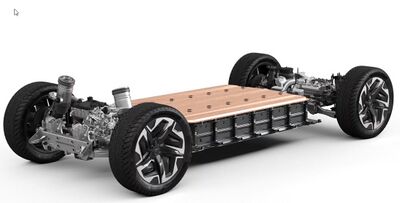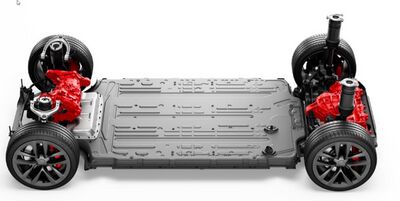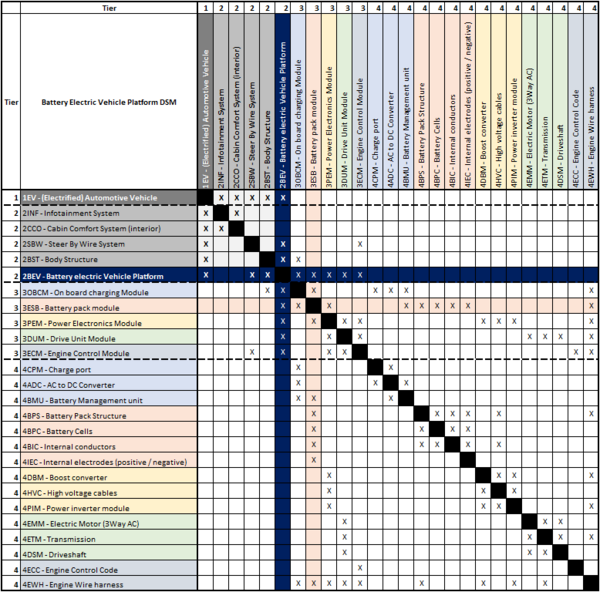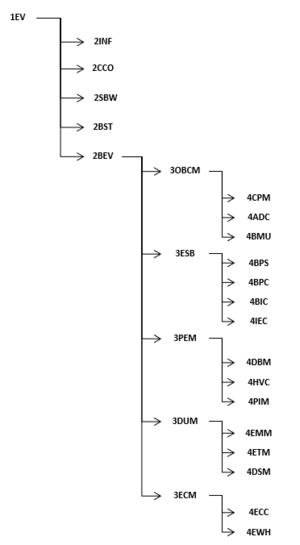Difference between revisions of "Battery Electric Vehicle Platforms"
| Line 1: | Line 1: | ||
=Technology Roadmap Sections and Deliverables= | =Technology Roadmap Sections and Deliverables= | ||
* ''' | * '''2BEV - Battery Electric Vehicle Platforms''' | ||
The Battery Electric Vehicle (BEV) platform, a level 1 roadmap, is a segment of the broader automotive market. Level 2 roadmaps represent the critical product/systems to that are integrated within an electrified platform. Level 3 roadmaps represent critical subsystems within an electrified vehicle, and level 4 roadmaps would indicate an individual component technology roadmap. | The Battery Electric Vehicle (BEV) platform, a level 1 roadmap, is a segment of the broader automotive market. Level 2 roadmaps represent the critical product/systems to that are integrated within an electrified platform. Level 3 roadmaps represent critical subsystems within an electrified vehicle, and level 4 roadmaps would indicate an individual component technology roadmap. | ||
Revision as of 22:10, 4 October 2023
Technology Roadmap Sections and Deliverables
- 2BEV - Battery Electric Vehicle Platforms
The Battery Electric Vehicle (BEV) platform, a level 1 roadmap, is a segment of the broader automotive market. Level 2 roadmaps represent the critical product/systems to that are integrated within an electrified platform. Level 3 roadmaps represent critical subsystems within an electrified vehicle, and level 4 roadmaps would indicate an individual component technology roadmap.
Roadmap Overview
Electrified vehicles (PHEV, BEV, FCV, etc.) are vehicles that utilize electric power (from a variety of different sources, such as batteries or fuel cells) to power an electric motor-based propulsion system. Electrified vehicles are an increasingly popular alternative to traditional gas-powered vehicles that generate propulsion through internal combustion engines. Electrified vehicles are one part of a broader ecosystem of solutions being used to combat the evolving problem/challenge of climate change. Electric vehicles help to solve this problem by providing humanity with an alternate mode of transportation that does not produce harmful greenhouse gas emissions.
This roadmap will focus specifically on the battery electric vehicle (BEV) platform. BEV platforms are becoming increasingly popular as consumers seek different options within the electric vehicle market, and manufacturers look for ways to meet this customer demand through the use of modular architectures that multiple different vehicle variants may be built upon. Modular architectures / platforms for battery electric vehicles are typically comprised of a battery pack, on board charging module, integrated power electronics, drive units, and a chassis will a wheel base. Multiple different vehicle bodies and accompanying features may then be built upon these platforms. Below are two examples BEV platforms being produced today (one by Tesla Motors, and one by General Motors).
Design Structure Matrix (DSM) Allocation
Our technology of interest, battery electric vehicle platforms, is identified in the DSM below with dark blue highlighting at level 2 (2BEV). Additionally, we also show a tree structure that decomposes into the systems, and subsystems that comprise our level 2 technology. The DSM shows how these critical systems and subsystems interact to comprise the battery electric vehicle platform. For example, we see that a critical subsystem is the level 3 battery pack module, which is color-coded to indicate that it has its own, existing technology roadmap (3ESB - Energy_Storage_via_Battery). The battery pack module (or Energy Storage Battery) is comprised of the battery cells, pack structure, and other subsystems. The battery cells break down into their individual components (anode, cathode, etc.) that generate electrons to conduct electricity. However, we also see the interdependency between the battery pack structure and the high voltage cables, which in turn have a connection to the power inverter module. All this is to say that the interconnected nature of subsystems within a BEV platform critically come together to create the emergence exhibited by a battery electric vehicle.
Roadmap Model using OPM
We provide an Object-Process-Diagram (OPD) of the Battery Electric Vehicle (BEV) Platform in the figure below. This diagrams captures the main object of the technology (Battery Electric Vehicle), the value-generating processes and different instruments associated with their characterization by Figures of Merit (FoM).
An Object-Process-Language (OPL) description of the roadmap scope is auto-generated and given in OPL_Battery_Electric_Vehicle. It reflects the same content as the previous figure, but in a formal natural language.
Figures of Merit
The figures of merit used to evaluate a battery electric vehicle platform are very similar to both the figures of merit used to evaluate any automotive vehicle (e.g., range, acceleration) as well as the figures of merit used to evaluate the battery pack technology employed within the battery electric vehicle (e.g., charge rate).
| Figure of Merit (FOM) | Unit | Description |
|---|---|---|
| Vehicle charge rate | [KW/hr] | Rate at which energy is added to the vehicle’s battery pack during charge |
| Motor Efficiency | [%] | Percentage of energy discharged from the battery pack that is converted to mechanical energy |
| Motor Torque | [N.m] | Torque produced by the electric vehicle motor |
| Kilometers per kilowatt | [km / kw] | The average distance the vehicle travels based upon the amount of energy used |
| Range | [km] | The number of miles the vehicle can travel on a single full charge |
| Acceleration time | [s] | Text |
In addition to the figures of merit shown above, some of the key governing equations for battery electric vehicles are shown below.
| Input | Key Relationship or Governing Equation | Output |
|---|---|---|
|
ηm = P_out / P_in | ηm : motor efficiency (expressed as a %) |
|
T = (V_ac* I_ac * p_f ) / ((2π* N_rpm )/60) | T = motor torque |
Alignment with Company Strategic Drivers
TBD
Positioning of Company vs. Competition
TBD
Technical Model
TBD
Financial Model
TBD
List of R&D Projects and Prototypes
TBD
Key Publications, Presentations and Patents
TBD
Technology Strategy Statement
TBD




